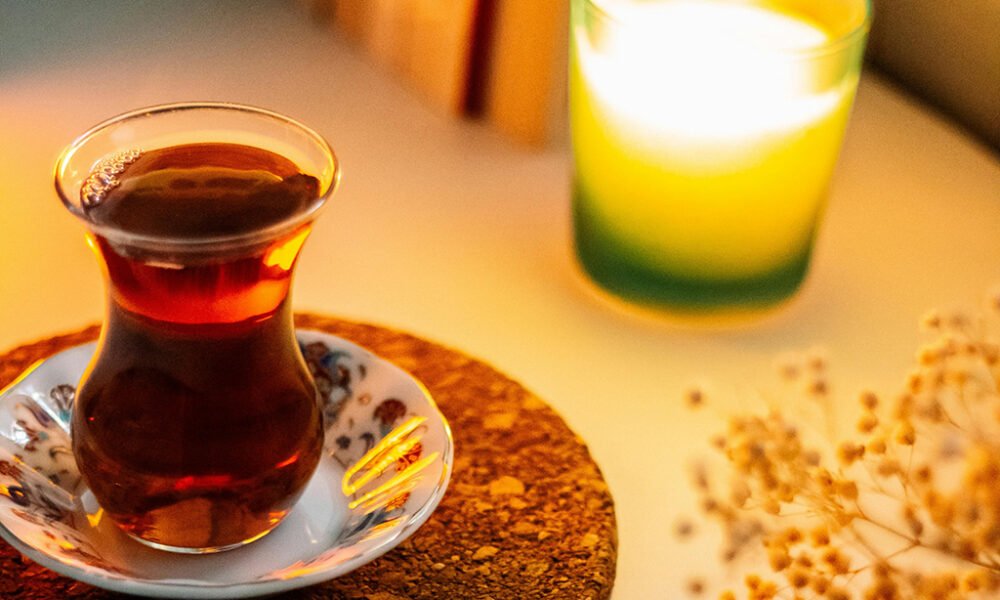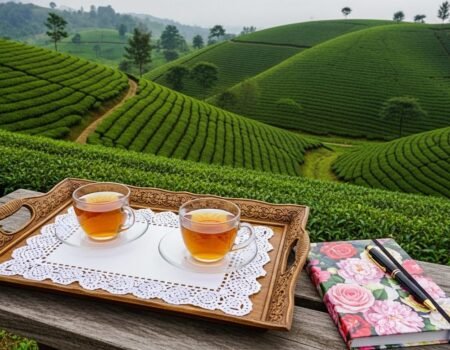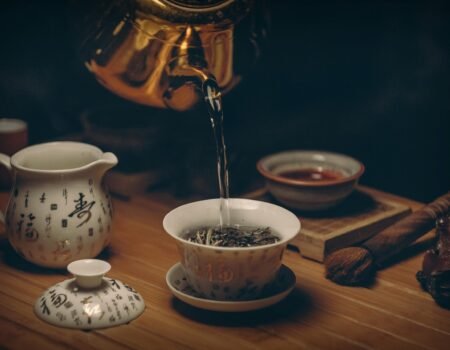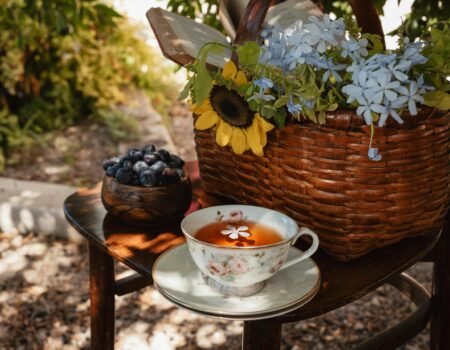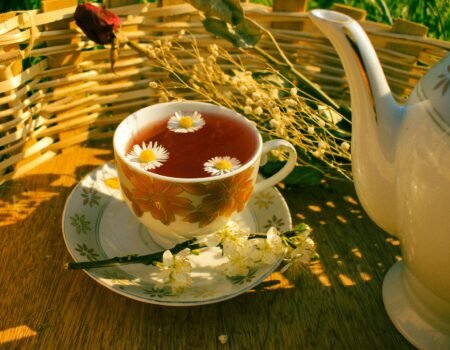Index
Index
Black tea comes from the Camellia sinensis plant, just like green, white, and oolong teas. The key difference lies in how it’s processed – black tea is fully oxidized, giving it that rich color and bold flavor.
This guide breaks down all types of black tea by region, processing method, and flavor profile. You’ll learn about classic blends like Earl Grey, single-origin teas from India and China, and how to tell high-quality tea from the rest.
Key Takeaways
- Black tea gets its dark color and bold taste through full oxidation of Camellia sinensis leaves, setting it apart from green, white, and oolong varieties.
- Two main processing methods exist: Orthodox (whole leaf) creates complex flavors, while CTC (Crush-Tear-Curl) produces stronger tea that stands up to milk and spices.
- Major black tea regions include India (Darjeeling, Assam, Nilgiri), China (Keemun, Dian Hong, Lapsang Souchong), Sri Lanka, and Kenya, each creating distinct flavor profiles.
- Classic blends like English Breakfast, Earl Grey (flavored with bergamot oil), and Russian Caravan showcase how versatile black tea can be across cultures.
- Darjeeling tea, known as the “Champagne of Teas,” comes in three main harvests: First Flush (spring), Second Flush (summer with muscatel flavor), and Autumnal.
Black Tea Basics

Black tea gets its dark color and bold taste from a process called oxidation. This step turns the fresh leaves dark and creates the rich flavors that make black tea different from green or white varieties.
Understanding What Makes Tea “Black”
Tea becomes “black” through full oxidation, a process that transforms the leaves of the Camellia sinensis plant. During this process, enzymes interact with the leaf compounds, creating theaflavins that give the tea its golden color and brisk flavor.
The longer oxidation also develops thearubigins, which create the darker coppery hue and more gentle taste profile that many tea drinkers enjoy. This complete oxidation sets black tea apart from green, white, and oolong varieties, which undergo less oxidation.
Two main plant varieties produce distinct black tea flavors. The sinensis varietal creates milder, more nuanced cups with subtle notes, while assamica yields heartier, more robust brews that stand up well to milk and sugar.
These differences explain why Darjeeling teas (often from sinensis) taste lighter than malty Assam teas (from assamica). Next, we’ll explore where black tea fits within the broader tea world and its significance among global tea traditions.
Black Tea’s Place in the Tea World

Black tea stands as the most popular tea variety outside China and Japan, making up a huge portion of global tea consumption. This fully oxidized leaf comes from the same plant as green tea but undergoes a distinct process that creates its rich color and bold taste.
Four major regions dominate production: India, Sri Lanka, China, and Kenya, each adding unique flavors to the world’s tea cups. While Westerners call it “black tea” due to its dark leaves, East Asian cultures refer to it as “red tea” because of its reddish-brown brew color.
Black tea holds special cultural importance across many societies. The British made it their national drink, while Russians serve it from samovars at social gatherings. Its health benefits come from special compounds called theaflavins and thearubigins, which act as antioxidants in the body.
Famous blends like English Breakfast, Earl Grey, and Masala Chai showcase how versatile black tea can be. Tea history also reveals fascinating facts – compressed tea bricks once served as currency throughout Central Asia, showing how valuable these leaves have been throughout human history.
Orthodox vs. CTC: The Two Processing Approaches
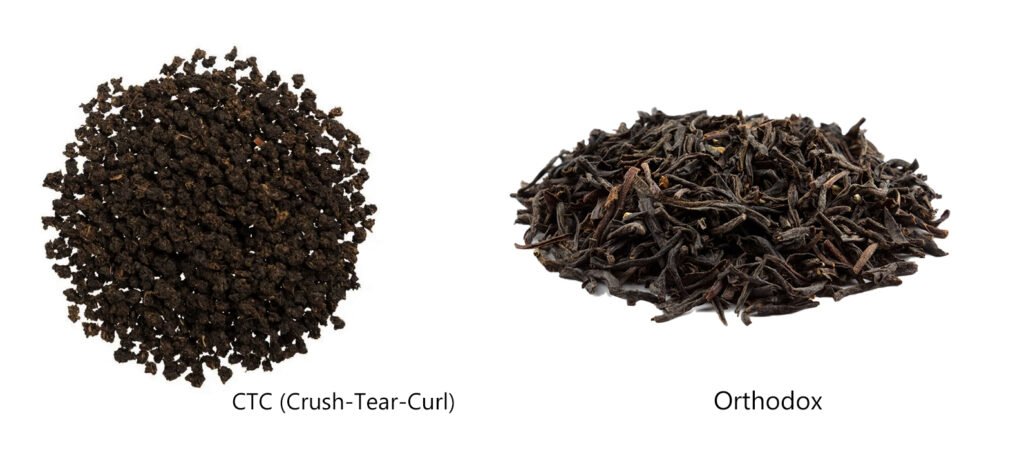
Black tea processing follows two main paths: Orthodox and CTC (Crush-Tear-Curl). Orthodox methods handle whole tea leaves with care through four steps: withering, rolling, oxidation, and firing.
This gentle approach creates complex flavors with less bitterness in your cup. Tea masters prize these nuanced brews for their depth and character. Many premium Chinese and Darjeeling teas use this time-honored technique.
CTC processing takes a faster, more mechanical route. Machines crush, tear, and curl the leaves into small, uniform pieces that brew quickly and strongly. This method yields a bold, often more bitter taste that stands up well to milk and spices.

Indian tea makers commonly use CTC for chai blends where robust flavor matters most. The smaller leaf fragments release more tannins, giving your morning cup that wake-up punch many tea drinkers crave.
Classic Black Tea Blends
Classic black tea blends mix teas from various regions to create distinct flavor profiles. Each blend has its own history and unique taste, from hearty breakfast teas to the citrus notes of Earl Grey.
British Heritage Blends (English, Irish, Scottish Breakfast)

British breakfast teas offer distinct flavor profiles for different morning tastes. English Breakfast stands as the lightest option, perfect for those who prefer a milder start to their day.
Irish Breakfast delivers a bold, strong cup thanks to its high Assam tea content, while Scottish Breakfast provides a full-bodied experience that pairs well with soft water regions.
Tea merchant Robert Drysdale created the English Breakfast blend in 1892, setting the standard for morning teas designed to stimulate and energize.
Each breakfast tea reflects regional preferences across the United Kingdom. Scottish Breakfast teas from Brodies Teas and Edinburgh Tea & Coffee Company feature robust flavors that cut through milk and sweeteners.
The grading of these teas often includes terms like “orange pekoe” or “broken orange pekoe” to indicate leaf quality and size. These classic blends remain popular worldwide for their consistent flavor profiles and their ability to deliver a caffeine boost that helps tea drinkers start their day with focus and energy.
Earl Grey and Its Variations

Moving from traditional breakfast blends, we find Earl Grey standing as a distinct classic with its own rich heritage. Earl Grey tea features black tea infused with bergamot oil, giving it a unique citrus aroma and taste profile.
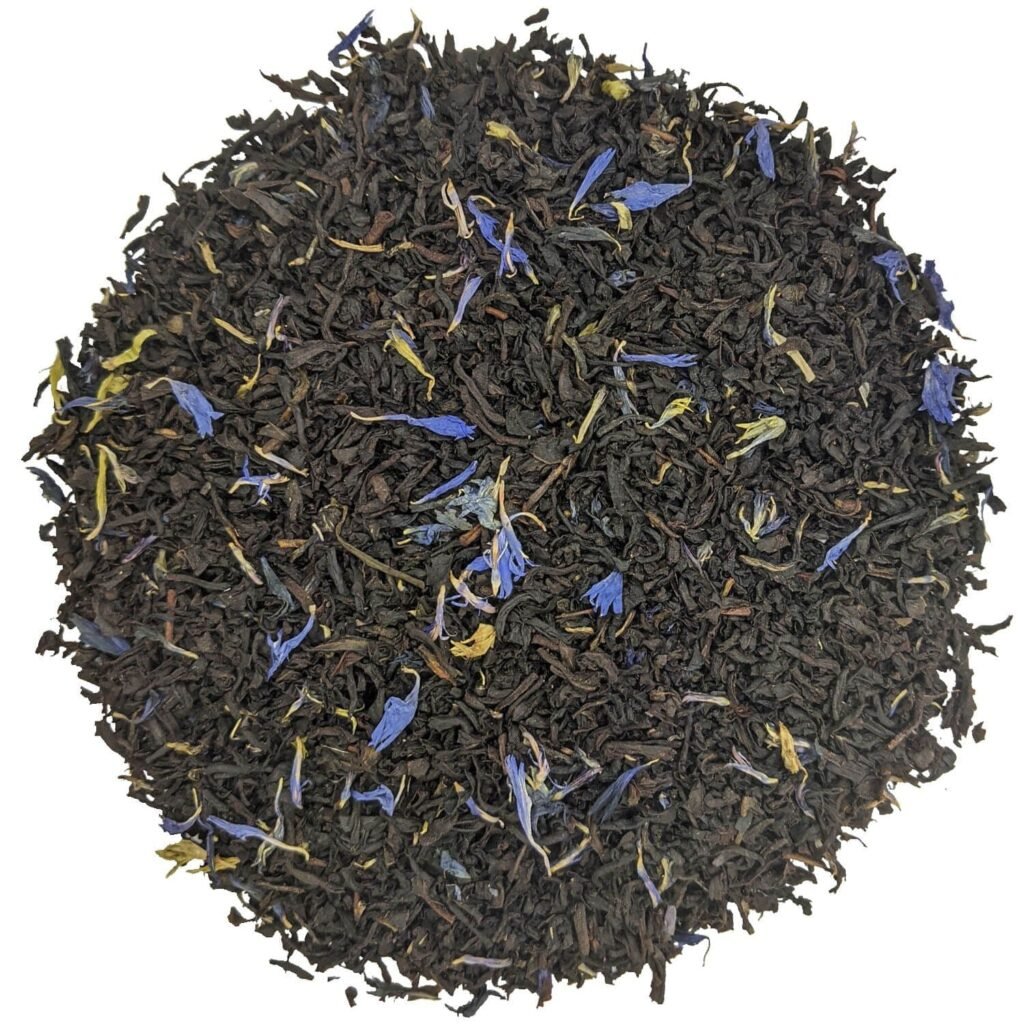
This famous blend traces its origins to Charles Grey II, the second Earl Grey and British Prime Minister in the 1830s. Tea lovers enjoy about 40 mg of caffeine per cup, making it a moderate energy booster.
Several variations have emerged from the original Earl Grey formula. Lady Grey, a trademarked Twinings creation, offers a milder flavor with added citrus notes. French Earl Grey incorporates rose petals and other floral elements.
The bergamot oil in these teas provides more than just flavor – studies show it helps with wound healing and may reduce cholesterol levels. Tea blenders often create custom Earl Grey mixes by adjusting the strength of bergamot or adding complementary flavors like lavender or vanilla.
Russian Caravan and Smoky Blends

Russian Caravan stands as a classic blend of Chinese black teas known for its distinct smoky flavor profile. This tea gained fame in European tea rooms by the mid-1800s and features Lapsang Souchong, which gives it that signature smokiness.

The taste balances sweet notes with smoky depths, making it popular among tea lovers who enjoy bold flavors.
Tea merchants created this blend to match the taste of tea that traveled the ancient caravan routes from China through Russia. The smoke from campfires would infuse the tea leaves during these long journeys.
Today, Russian Caravan remains a favorite in European and American markets, often served at afternoon tea gatherings or enjoyed as a warming drink during cold weather.
Contemporary Craft Blends
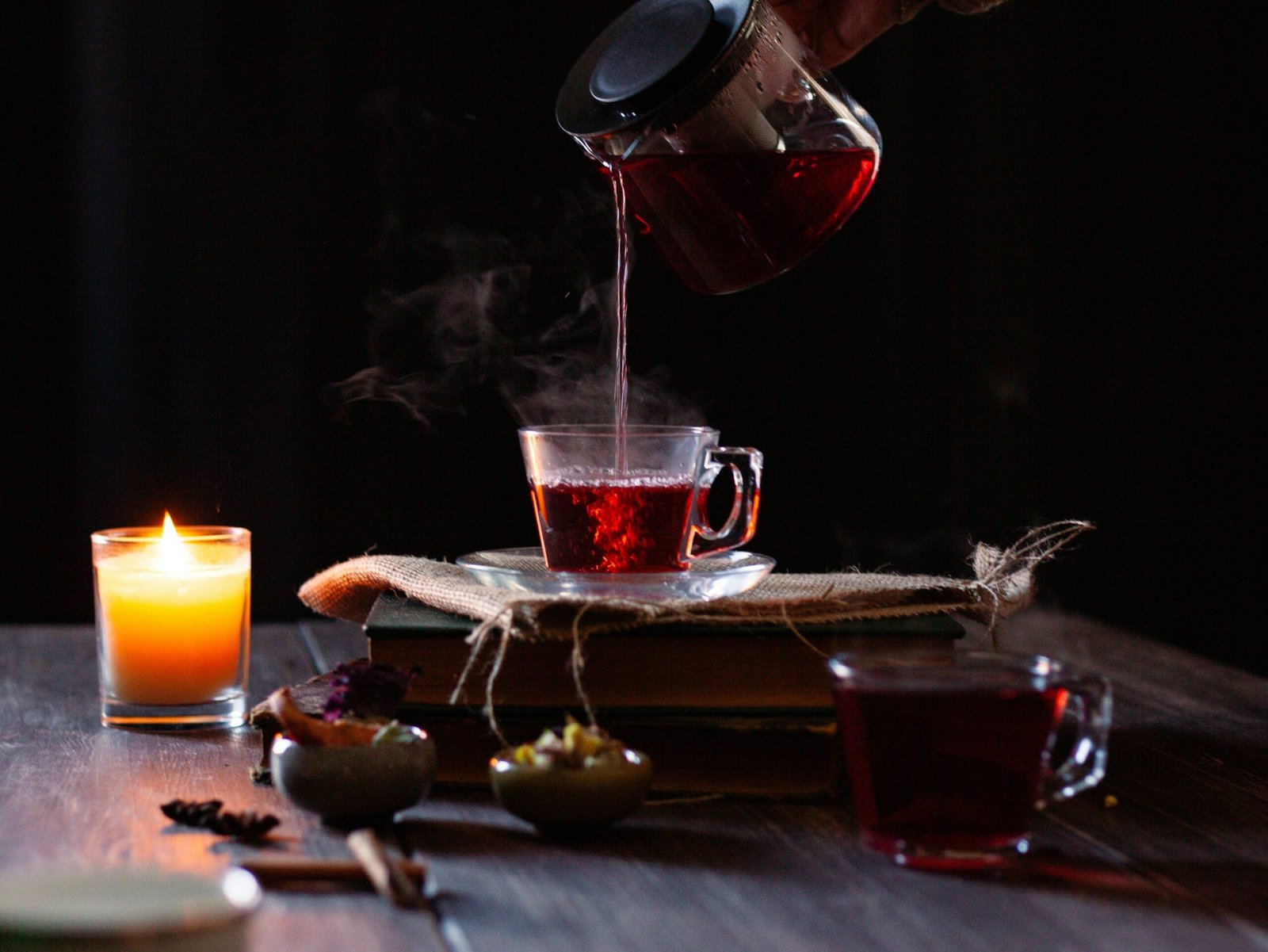
Craft tea blenders have revolutionized black tea by creating unique flavor profiles that push beyond traditional offerings. These artisans combine Assam, Darjeeling, and Ceylon bases with carefully selected fruits, flowers, and spices to produce distinctive tastes.
Established blends like Brigittes Blend, Queen Catherine, and All India showcase the art of creative blending that appeals to modern palates while respecting tea traditions.
Tea masters apply three main techniques in craft blending: scenting, flavoring, and precise mixing of different tea varieties. The best craft blends start with organic black teas for their robust flavor foundations.
Getting the proportions right demands expertise – too much of any ingredient can overpower the delicate balance that makes these contemporary blends special.
The Art of Blending
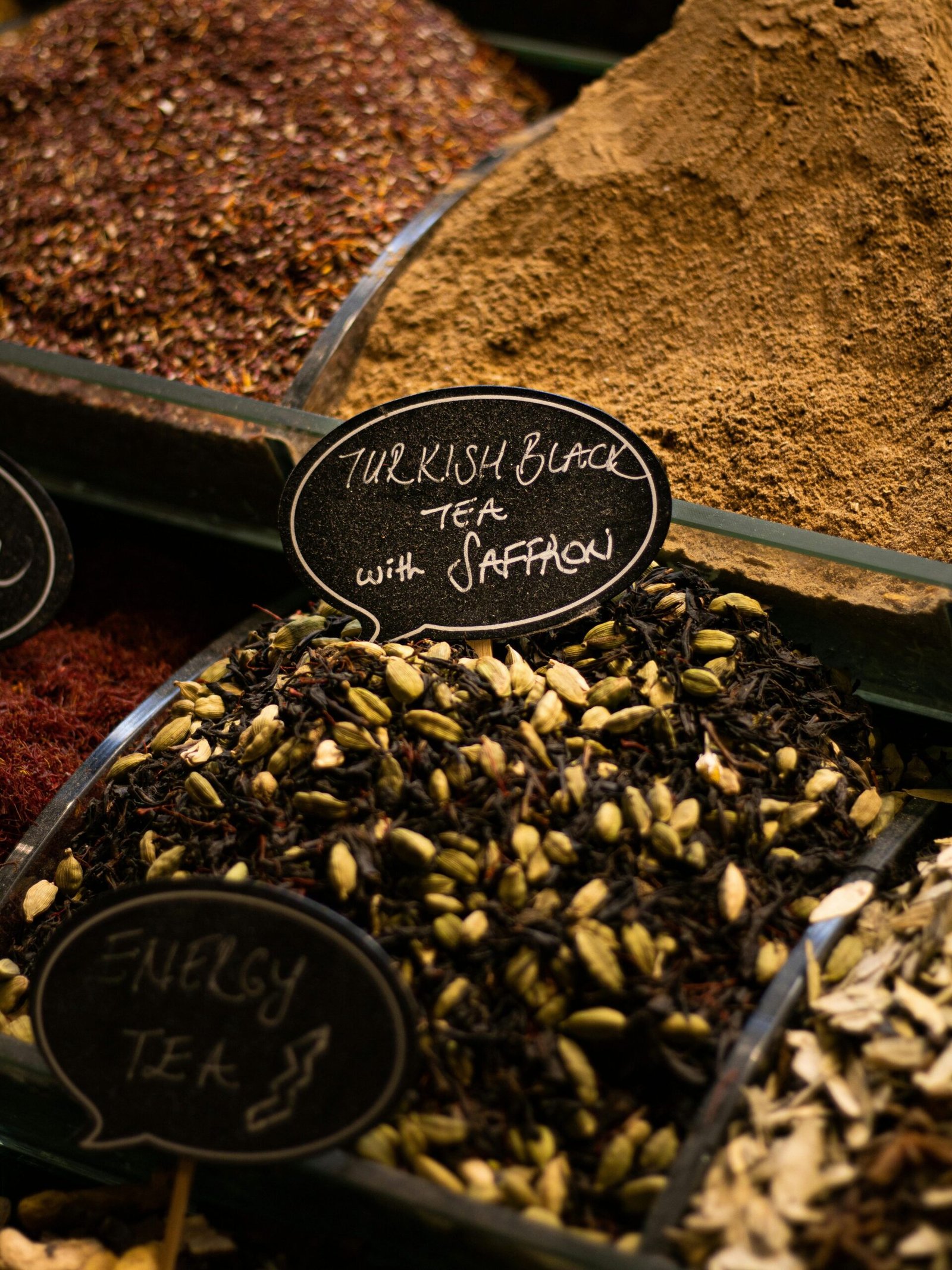
Tea blending combines more than just tea leaves to create unique flavor profiles. Master blenders mix different tea varieties with spices, flowers, or fruits to produce signature tastes.
Famous blends like Earl Grey Supreme and Paris showcase this creative process. Tea makers use three main methods: scenting with aromatic oils, flavoring with natural extracts, and mixing different tea bases.
Each technique requires patience and skill to balance all elements perfectly.
Good blending starts with quality ingredients and ends with harmony in your cup. Tea experts test countless combinations before finding the right balance of strength, aroma, and taste.
Hot Cinnamon Spice tea shows how spices can transform a simple black tea base into something special. The next section explores the rich variety of black teas from India, where some of the world’s most prized leaves grow.
Types of Black Tea from India

India grows some of the world’s most prized black teas in its varied regions. Each area creates unique flavors based on climate, soil, and growing methods.
Darjeeling: The “Champagne of Teas” (First Flush, Second Flush, Autumnal)
Darjeeling tea stands as the crown jewel in the black tea world, often called the “Champagne of Teas” for its unique muscatel flavor. This prized tea grows in the foothills of the Himalayas near the borders of Nepal and Bhutan.

- Darjeeling tea plants thrive at high altitudes between 2,000-7,000 feet above sea level, creating perfect growing conditions.
- The region’s cool climate, misty air, and rich soil give Darjeeling tea its distinct taste that can’t be copied elsewhere.
- First Flush Darjeeling teas harvest in spring (March-May) and offer light, floral notes with a bright golden liquor.
- Marybong First Flush stands out for its brisk character and tropical fruit flavors that dance on the palate.
- Tea experts prize First Flush for its delicate taste and higher price point compared to other harvests.
- Second Flush teas pick in early summer (May-June) and develop the famous muscatel flavor – a grape-like sweetness.
- The muscatel notes in Second Flush come from tiny insects that bite the leaves, causing the plant to release special compounds.
- Second Flush brews create a copper-colored cup with fuller body and deeper fruit notes than First Flush.
- Autumnal Darjeeling teas harvest in late summer and fall (October-November) after the monsoon season ends.
- These late-season teas offer a darker cup with rich, mature flavors that balance strength and sweetness.
- Darjeeling tea grades follow the Orange Pekoe system, with FTGFOP (Finest Tippy Golden Flowery Orange Pekoe) marking top quality.
- True Darjeeling tea makes up less than 1% of India’s total tea production, adding to its exclusive status.
- The tea gardens in Darjeeling number around 87, each producing teas with subtle differences in flavor profiles.
- Many tea lovers collect different estate Darjeelings to compare the unique “terroir” of each garden.
- Proper brewing requires water just below boiling (195°F) and steeping times of 3-4 minutes to capture the complex flavors.
Let’s explore the bold and malty Assam teas that offer a completely different flavor profile from their Darjeeling cousins.
Assam: Bold and Malty Orthodox and CTC Varieties

While Darjeeling teas offer delicate nuances, Assam black teas deliver bold, robust flavors that stand out in your cup. India leads the world in black tea production, with Assam as its largest growing region.
The rich soil and humid climate create teas with full-bodied taste and a distinctive malty character. Assam teas come in two main processing styles: orthodox (whole leaf) and CTC (crush-tear-curl).
CTC Assam yields a rich amber color perfect for breakfast blends and milk tea.
Mokalbari Golden Assam represents a premium variety with nearly 100% golden tips and natural sweetness. This rare tea shows why Assam remains highly sought after by tea lovers worldwide.
Organic Assam black tea earns impressive ratings (4.83/5.0) from tea experts for its quality and flavor profile. The strong taste makes it a popular base for English Breakfast blends that wake you up each morning.
Nilgiri: The Aromatic Blue Mountain Teas

Unlike Assam’s bold profile, Nilgiri teas offer a different experience from India’s tea landscape. These aromatic teas grow in the Blue Mountains of southern India, producing a distinct amber brew with balanced character.
Nilgiri black tea features a unique flavor profile that sits between Assam’s maltiness and Darjeeling’s delicacy. Tea experts prize these leaves for their fruity and floral notes that develop from the region’s specific climate and elevation.
Nilgiri teas stand out for their robust body without overwhelming strength. The cup delivers bright, clean taste with minimal astringency, making it perfect for iced tea applications.
Many tea drinkers enjoy Nilgiri’s versatility – it works well plain, with milk, or as a base for flavored blends. The growing location gives these teas their signature aroma that differs from other Indian varieties, creating a truly regional specialty worth exploring.
Regional Specialties: Kangra and Munnar
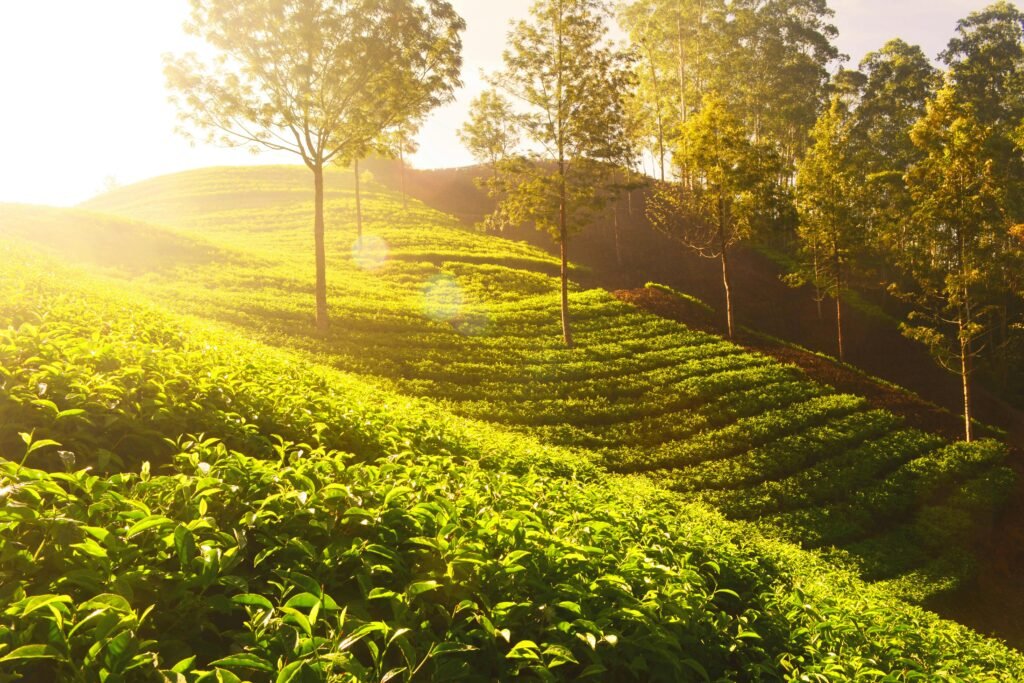
Beyond the Blue Mountains of Nilgiri, India offers more unique tea treasures in its regional varieties. Kangra tea grows in the foothills of the Himalayas and delivers a distinct flavor profile marked by nutty notes and a delicate aroma that sets it apart from other Indian teas.
Tea gardens in Munnar, located in Kerala’s high hills, produce teas with bright copper liquor and a sweet, clean taste that reflects the region’s misty climate. Both these regional specialties often appear in breakfast blends, adding depth and character to popular tea mixes.
India’s tea diversity shines through these lesser-known regions that contribute to the country’s rich tea heritage. The All India blend showcases this variety by combining Assam’s malty strength, Darjeeling’s muscatel notes, and Nilgiri’s brightness with the unique qualities of Kangra and Munnar teas.
Tea leaf grading varies across these regions, with each area following specific standards based on leaf size, bud content, and processing methods. Tea enthusiasts prize these regional varieties for their authentic taste profiles that reflect India’s varied growing conditions and tea-making traditions.
Differences Between Regions and Seasons

Tea regions create distinct flavor profiles based on their unique growing conditions. Assam teas offer rich, bold cups with full-bodied character, while Darjeeling produces lighter teas harvested in two main flushes.
Nilgiri teas strike a balance – milder than Assam but more robust than Darjeeling. Elevation plays a crucial role in Ceylon teas, with high-grown varieties showing delicate notes compared to stronger low-grown types.
Seasonal harvests dramatically affect tea quality and taste. First flush Darjeeling teas command higher prices for their delicate, floral qualities harvested in spring. Summer brings second flush teas with muscatel grape notes.
The seasonal differences in rainfall, temperature, and sunlight hours create flavor complexity that tea enthusiasts prize. African teas often maintain more consistent profiles year-round due to their equatorial climate zones.
Types of Black Tea from China

Chinese black teas offer some of the most diverse flavors in the tea world. China’s tea regions produce unique varieties that range from sweet and malty to smoky and complex.
Keemun: The Original Breakfast Tea

Keemun tea stands as the backbone of English Breakfast blends, hailing from Qimen County in China’s Anhui province. This premium black tea offers a distinct reddish amber color in your cup and delivers a brisk flavor profile with smoky and toasty notes that tea lovers prize.
Many tea experts value Keemun for its high antioxidant content and potential heart health benefits. The tea’s rich character comes from specific processing methods that bring out its signature taste.
Tea drinkers often choose Keemun as their morning cup because its robust flavor pairs well with milk and sugar. The tea’s popularity spread to England in the 19th century, quickly becoming the base for what we now know as breakfast tea blends.
Quality Keemun displays a complex taste that balances smokiness with subtle sweetness, making it different from other Chinese varieties. Next, we’ll explore Dian Hong teas from Yunnan province, known for their golden tips and unique monkey tea varieties.
Dian Hong: Yunnan’s Golden Tips and Monkey Teas

While Keemun offers a classic breakfast experience, Dian Hong presents a different side of Chinese black tea craftsmanship. This Yunnan Red Tea stands out with its distinctive golden tips and smooth flavor profile.
Dian Hong teas feature a brassy golden-orange color in the cup and deliver a sweet taste without the astringency found in many other black teas. The gentle earthy aroma complements its smooth character, making it a favorite among tea enthusiasts seeking premium options.
Dian Hong contains more caffeine than green tea varieties, giving it an energizing quality that many tea drinkers appreciate. Chinese tea producers craft these teas with care, resulting in high-end gourmet products that showcase the unique terroir of Yunnan province.
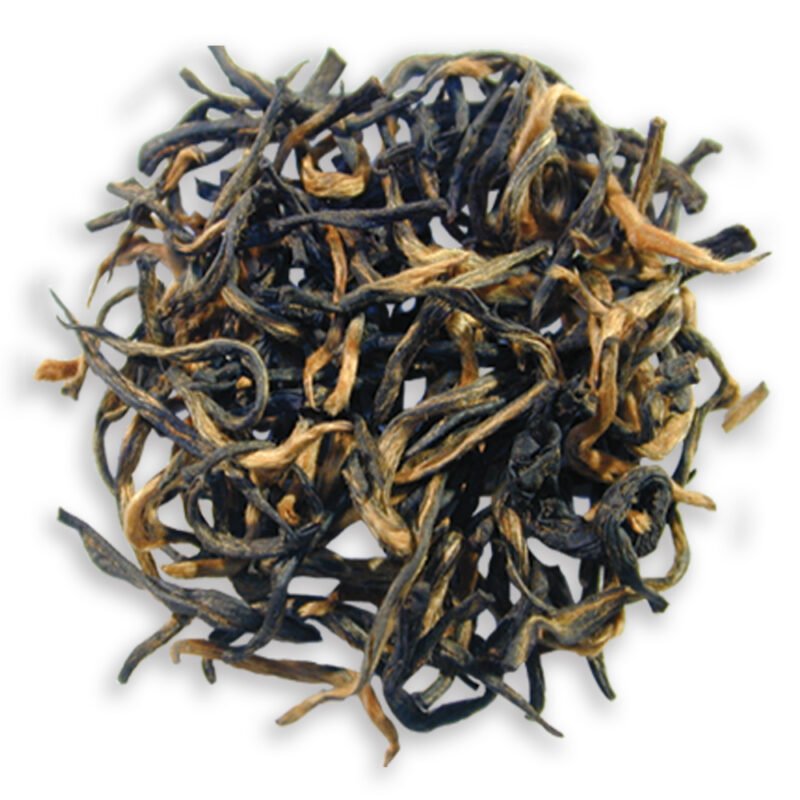
The Golden Monkey and Golden Tips varieties represent some of the finest examples, with their characteristic golden buds mixed with darker leaves. Tea grading for Dian Hong often reflects the percentage of golden tips present, with higher grades containing more of these prized buds.
Lapsang Souchong: Traditional Pine-Smoked Tea
Moving from Yunnan’s golden-tipped teas, we find Lapsang Souchong – China’s most distinctive smoked tea. This famous black tea comes from the Wuyi Mountains in Fujian province and features a bold smoky flavor unlike any other tea.
Producers create it using the fourth and fifth leaves of the tea plant, which they dry over burning pinewood. The smoke infuses the leaves completely, creating a strong aroma that tea drinkers often describe as campfire-like.

Lapsang Souchong gained popularity in European tea rooms by the mid-1800s, where people enjoyed its unique character. The tea offers high levels of antioxidants and aids digestion, making it both flavorful and beneficial.
Tea shops often sell this variety as both a standalone drink and as part of Russian Caravan blends. Many tea experts suggest brewing Lapsang at slightly lower temperatures than other black teas to balance its intense smoky notes with its natural sweetness.
Premium Varieties: Jinjunmei and Gongfu Black

Jinjunmei stands as a prized black tea from China’s Wuyi Mountain region. Its fluffy leaves display tiny hairs that set it apart from other teas. The essential oils and esters in Jinjunmei create a unique aroma that tea lovers seek.

Due to limited production, this luxury tea commands high prices in the market.
Gongfu Black tea represents the careful craftsmanship of Chinese tea masters. This tea requires precise processing techniques that bring out deep flavors and rich aromas. Both Jinjunmei and Gongfu Black teas show why Chinese black teas deserve special attention from serious tea drinkers.
These premium varieties offer a taste experience quite different from the bold Indian teas many Westerners know best.

New Wave Chinese Black Teas: Yonghong and Jiu Qu Hong Mei


Beyond premium varieties like Jinjunmei, China has developed exciting new black teas worth exploring. Yonghong represents the modern approach to Chinese black tea production, offering unique flavor profiles that differ from traditional varieties.
Jiu Qu Hong Mei, produced in Hangzhou’s Zhejiang province, stands out with its glossy red leaves and sweet floral aroma.
High-quality Jiu Qu Hong Mei tea features dark, tight, curved leaves that create a bright red infusion with golden hues. This fully fermented black tea joins other innovative Chinese teas that blend ancient methods with modern techniques.
Tea drinkers often notice the distinct flavor differences between these new wave teas and classic Chinese black teas like Keemun or Lapsang Souchong.
Types of Black Tea from Sri Lanka

Sri Lankan black teas offer a wealth of flavors based on where they grow. Ceylon teas change from light and floral to rich and full-bodied as you move from high mountains to coastal plains.
High-Grown Ceylon: Light and Delicate Nuwara Eliya
Nuwara Eliya produces some of the most prized ceylon black tea in the world. Grown at 6,100 feet above sea level, these teas develop a distinct golden hue and delicate aroma that tea experts describe as “fit for the Gods.” The high elevation creates perfect conditions for slow leaf growth, resulting in a light, fine, and slightly tart flavor profile that sets it apart from other black tea varieties.
Tea workers in Nuwara Eliya still hand-pluck the leaves and process them using traditional methods that have remained largely unchanged for generations. This careful handling preserves the tea’s subtle notes and ensures the highest quality in each cup.
The flavor of these high-grown teas changes with each season, making them sought after by collectors and enthusiasts who appreciate their unique character and exceptional taste.
Mid-Grown Ceylon: Rich and Full-Bodied Kandy
While high-grown Ceylon teas offer delicate flavors, mid-elevation varieties from Sri Lanka deliver a more robust experience. Kandy teas grow at moderate altitudes and develop a distinctive copper color in the cup.

These full-bodied black teas strike a perfect balance between boldness and richness, making them popular choices for classic blends like Earl Grey and English Breakfast.
Tea gardens in the Kandy region produce leaves with unique characteristics shaped by the local climate and soil. The flavor profile typically includes malty notes with hints of chocolate and spice.
Many tea experts prize Kandy teas for their versatility – they taste great plain or with milk. Regional production methods further enhance these qualities, creating black teas that stand out in the global market.
Low-Grown Ceylon: Strong and Dark Ruhuna

Unlike the mid-altitude Kandy teas, Ruhuna offers a bold contrast in Sri Lanka’s tea landscape. These low-grown teas thrive below 2,000 feet in Ceylon’s southern region, producing cups with robust character and deep color.
Ruhuna black tea delivers a strong, dark profile that stands up perfectly to milk, making it a favorite for breakfast blends. The rich soil and warm climate create ideal conditions for tea plants to develop higher levels of theaflavins and thearubigins – compounds that give black tea its distinctive taste.
Sri Lanka ranks as the world’s fourth largest tea producer, supplying 19% of global tea. Ruhuna contributes significantly to this output with its full-bodied leaves that brew into cups packed with flavor.
Tea experts prize these varieties for both taste and health benefits, including support for heart health and immune function. Many tea lovers seek out Ruhuna specifically for its intense character that differs markedly from its higher-elevation cousins.
How Elevation Affects Ceylon Tea Flavor
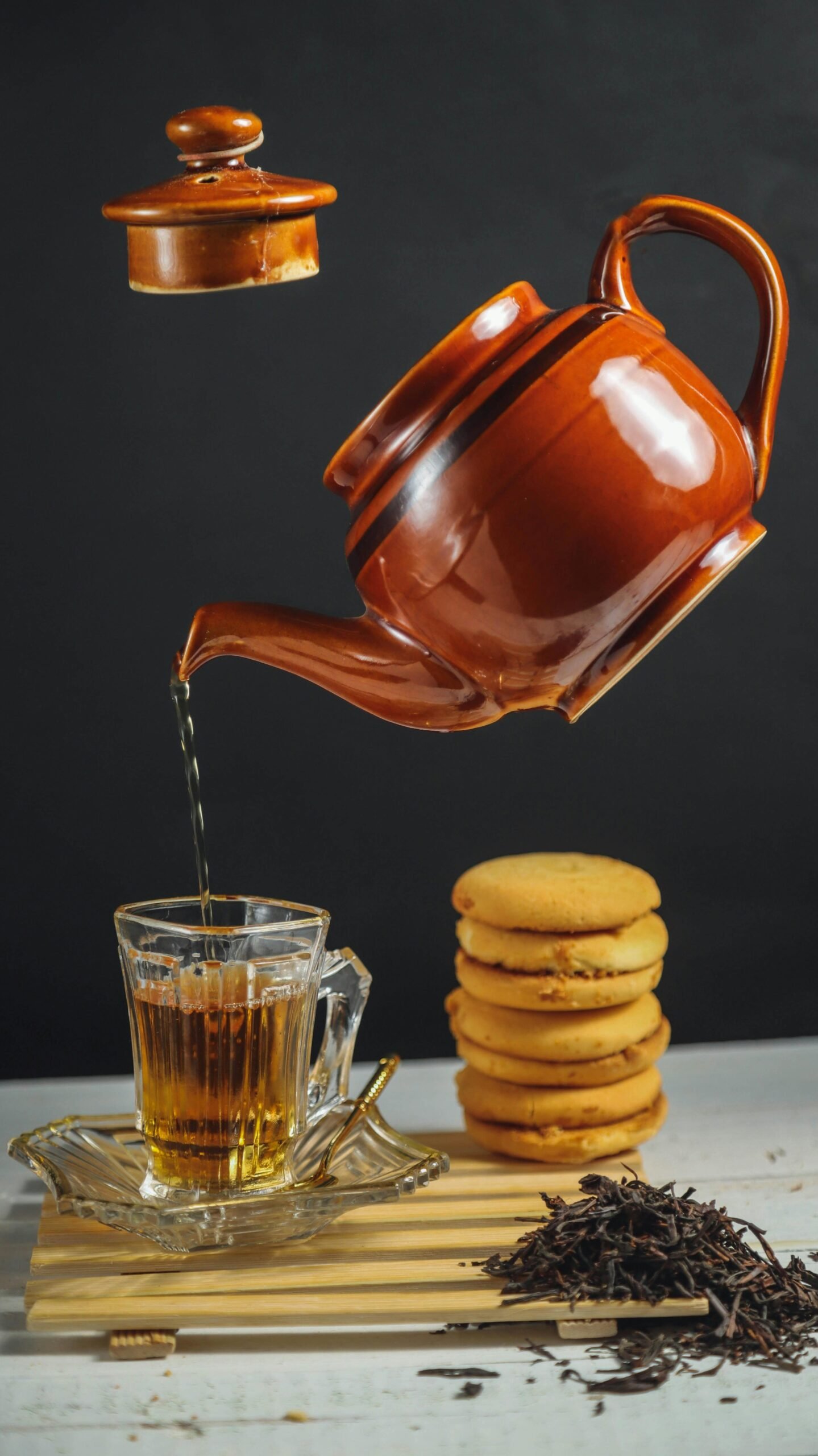
Elevation plays a crucial role in shaping Ceylon tea’s distinct flavor profiles across Sri Lanka. Teas from Nuwara Eliya, grown above 6,000 feet, produce lighter-colored liquors with delicate, floral notes that tea experts prize for their refined character.
Mid-elevation regions like Uva Province create darker cups with medium body and balanced flavor intensity. The Southern Province and lower regions yield robust, full-bodied teas with deep amber colors and strong, malty characteristics that stand up well to milk.
The mountains of Sri Lanka create unique microclimates that impact tea growth rates and chemical composition. High-grown teas develop slowly in cooler temperatures, allowing complex flavors to form while maintaining brightness and clarity.
Low-elevation teas mature faster in warmer conditions, developing deeper colors and stronger flavors with pronounced tannins. Sabaragamuwa teas offer an interesting middle ground, combining the bright notes of high-grown varieties with some of the strength found in low-grown teas.
These elevation differences give Ceylon tea its remarkable range of taste experiences.
Notable Regional Varieties

Beyond the famous tea regions, many hidden gems await discovery from around the world. Black teas from Africa, Taiwan, Korea, and the Middle East offer unique flavors shaped by local soil and climate.
African Teas: Kenyan and Rwandan
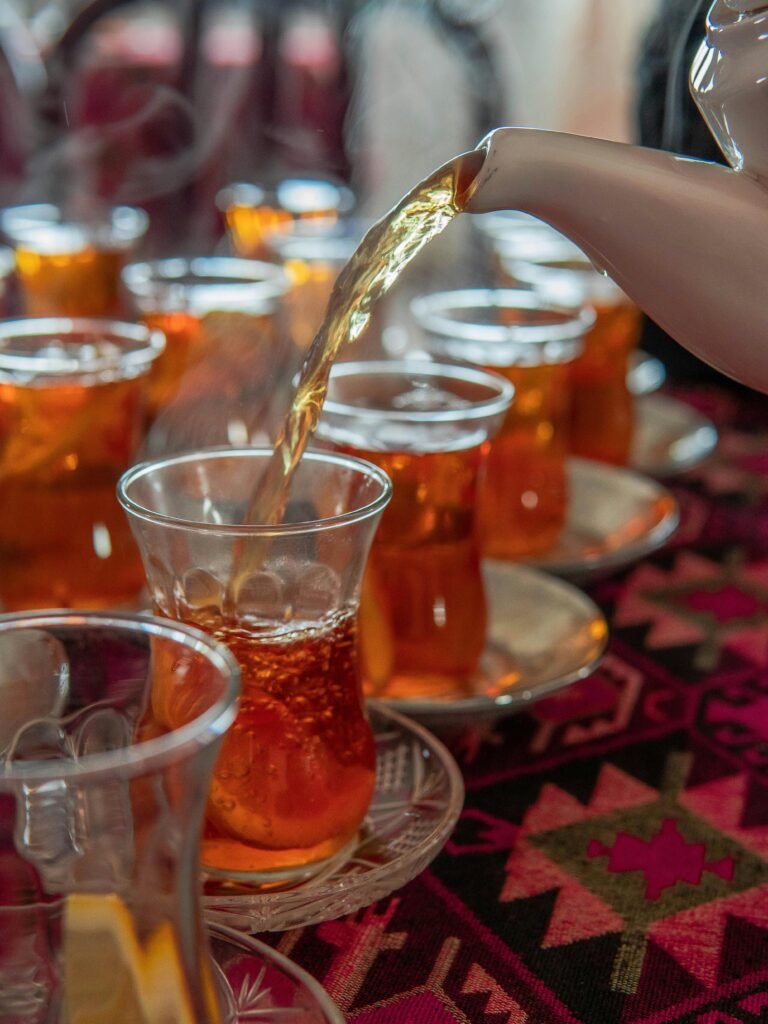
Kenyan black teas stand out with their bright reddish copper color and full-bodied flavor. Tea production in Kenya began in 1903, with the country’s cool air and volcanic soil creating perfect growing conditions.
These robust teas form the backbone of many breakfast blends, offering a strong cup that pairs well with milk.
Rwandan teas have gained recognition in the global market, focusing mainly on CTC (Cut, Tear, Curl) production methods. These teas yield a flavorful, robust coppery liquor that tea enthusiasts prize.
Rwandan CTC teas deliver consistent strength and character, making them excellent choices for daily drinking or as components in custom blends.
Taiwanese Treasures: Sun Moon Lake and Ruby Black
Taiwan produces some of the world’s finest black teas, with Ruby 18 standing out as a prized variety. This special tea grows near Sun Moon Lake, where unique climate and soil create perfect growing conditions.


Tea fans prize Ruby Black (also called Ruby Red) for its bold flavor profile that mixes malty notes with hints of cinnamon and mint. The quality stems from careful growing practices and the specific geography of the region.
Sun Moon Lake black tea has gained fame beyond Taiwan’s borders in recent years. The tea shows off deep red colors in the cup and offers a smooth taste that lacks the bitterness found in other black teas.
Local farmers craft this tea through traditional methods passed down through generations. Ruby 18 represents a successful hybrid that combines native plants with Burma Assamica varieties, creating a distinct Taiwanese tea treasure that reflects the island’s tea culture.
East Asian Specialties: Korean Jaekseol

Korean black tea, known as “hong cha” in East Asian countries, offers tea lovers a distinctive flavor experience. Jaekseol stands out as a special variety in the black tea world with its unique aroma and taste profile.
This tea undergoes traditional processing methods similar to other black teas but yields results that capture Korea’s tea-making heritage. The reddish color of its brew gives this tea its local name and sets it apart visually from other varieties.
Tea drinkers who enjoy exploring regional differences will find Jaekseol adds depth to their understanding of East Asian tea culture. The production techniques maintain the tea’s natural character while developing its signature traits.
Jaekseol represents Korea’s contribution to the diverse black tea landscape, showing how geography and local customs shape tea development. Many tea experts praise this variety for its balanced flavor and cultural significance within Korean tea traditions.
Middle Eastern Varieties: Turkish Rize and Iranian Lahijan
Turkish Rize black tea stands out with its bright, robust flavor profile. People in Turkey drink this bold tea without milk, often paired with sweet treats that balance its strong taste.

The tea comes from the coastal Rize province, where the climate creates perfect growing conditions for this regional specialty.
Iranian Lahijan tea offers a different experience with its smooth, delicate aroma and slightly sweet taste. This tea forms a central part of Iran’s social customs, where friends gather to enjoy cups of this fragrant brew.
Both Rize and Lahijan teas showcase the rich tea culture of the Middle East, each reflecting unique local traditions in tea production and consumption.
Emerging Single-Origin Teas
Beyond the classic teas of the Middle East, a new wave of single-origin black teas has captured the attention of tea lovers worldwide. Countries like Nepal, with its Himalayan terroir similar to Darjeeling, now produces distinctive teas with muscatel notes and honey-like sweetness.
Vietnam’s wild tea forests yield unique black teas with cocoa and fruit flavors that stand apart from their Chinese neighbors. These emerging regions benefit from both ancient tea trees and modern processing methods.
Small farms in Thailand, Laos, and even Georgia (the country) now craft limited batches of black tea with distinct regional character. The global market has noticed these newcomers, with specialty tea shops featuring these rare finds alongside traditional favorites.
Tea drinkers enjoy these single-origin options because they express pure regional flavors without blending. Each cup tells the story of its specific soil, climate, and local tea-making customs.
Understanding Tea Quality & Tasting

Knowing the difference between good and average black tea can change your whole drinking experience. You’ll find clear signs of quality in the leaf shape, aroma, and how the tea feels in your mouth.
How to Choose Quality Tea
Quality tea starts with careful inspection. Look at the leaves – whole, unbroken leaves signal higher quality than crushed or powdered varieties. Good black tea leaves should appear uniform in color with golden or silver tips visible in premium grades.
Smell the dry leaves next. Fresh black tea gives off distinct aromas based on its origin – Assam teas offer malty notes while Darjeelings provide muscatel grape scents. The tea’s appearance and aroma provide immediate clues about its quality level.
Touch and taste complete your quality assessment. Quality black tea feels substantial, not dusty or brittle. Brew a small sample and notice the mouthfeel – it should feel smooth, not harsh or bitter.
Geographic origin plays a major role in flavor profiles. Indian teas differ greatly from Chinese varieties like Keemun or Dianhong. Ceylon teas from Sri Lanka change character based on elevation – high-grown teas taste more delicate than robust low-grown types.
Trust your senses to guide your selection process.
Developing Your Palate
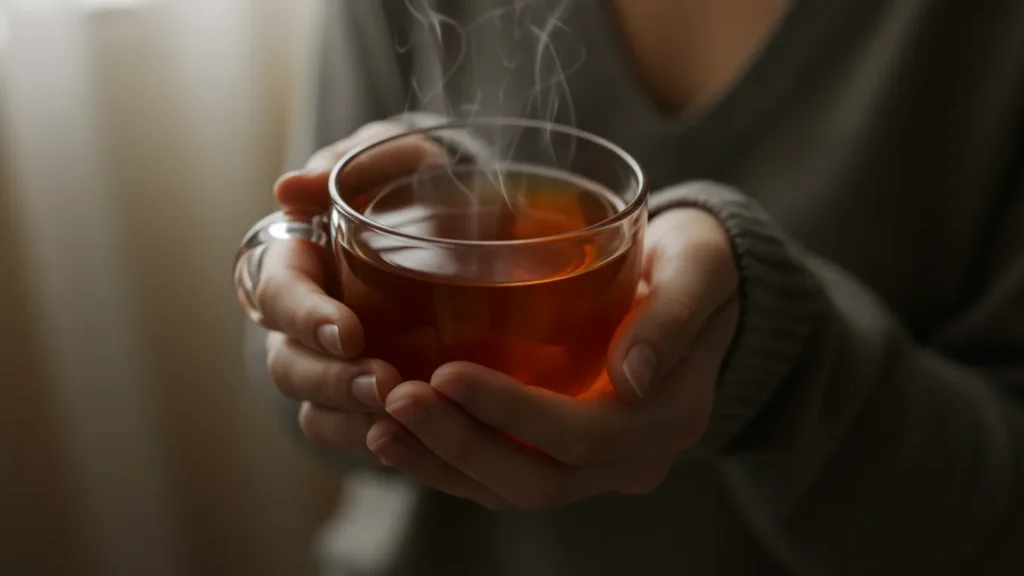
Tea tasting skills grow with practice and attention. Start by sampling different black tea varieties like Darjeeling, Assam, Ceylon, and Keemun side by side to spot their unique traits.
Notice how Darjeeling offers light, muscatel notes while Assam delivers bold maltiness. Take simple notes about each tea’s aroma, flavor, and how it feels in your mouth. Geographic origin greatly affects taste – Indian teas differ from Chinese ones in distinct ways.
Your taste buds become more sensitive with each tasting session. Try brewing the same tea at different temperatures or steeping times to understand how preparation changes flavor. The timing of leaf plucking also creates flavor differences worth noting.
Many tea lovers keep tasting journals to track their experiences and preferences over time. Learning proper brewing techniques will help you extract the full range of flavors from each tea variety.
Tasting Notes and Evaluation

Building on your tea-tasting skills means learning to record what you notice. Tasting notes help track your impressions of different black teas over time. Focus on four key areas: leaf appearance, aroma, infusion color, and taste profile.
High-quality Dianhong shows whole leaves with large buds that create a bright red liquor. Jin Jun Mei features tightly curled leaves with a distinct floral aroma.
Your evaluation becomes more precise as you practice. Note if the tea has a mellow flavor or deep red infusion typical of quality black tea. Dark, glossy leaves often signal proper processing.
The sweet, floral scent of Jiuqu Hongmei pairs with its bright red color when brewed. Many tea lovers keep journals to compare varieties and track their favorites. This practice sharpens your ability to identify subtle differences between regions and processing methods.
Understanding Grades and Labels
Tea grades tell you about quality, size, and appearance of black tea leaves. SFTGFOP marks the highest quality whole leaf teas with golden tips and perfect processing. BOP indicates broken leaf varieties often used in tea bags, brewing faster with stronger flavor.
These classifications directly impact what you taste in your cup and what you pay at checkout. Higher grades like FTGFOP feature intact leaves that deliver complex flavors and can be steeped multiple times.
Tea labels might seem confusing at first, but they serve as your guide to finding teas that match your taste preferences.
Grade markings vary between tea-producing regions, with Indian and Sri Lankan systems differing from Chinese classifications. The Ceylon tea industry uses its own grading structure based on leaf size and elevation.
Whole leaf grades command premium prices in specialty tea shops, while broken grades dominate supermarket shelves and commercial blends. Many tea enthusiasts collect different grades from the same estate to compare flavor profiles and brewing characteristics.
Learning these tea labels helps you make smarter purchases and appreciate the craftsmanship behind each black tea variety.
Best Storage Practices

Proper storage makes all the difference between enjoying vibrant black tea and settling for stale, flat flavors. Black teas maintain their complex taste profiles for 18-24 months when stored correctly.
- Use airtight containers to prevent moisture and odors from affecting your tea leaves. Glass jars with tight-fitting lids or specialized tea tins work best for maintaining freshness.
- Keep tea away from direct light which breaks down flavor compounds. Dark cabinets or opaque containers protect delicate tea components from light damage.
- Store your tea collection at cool room temperature between 65-75°F (18-24°C). Avoid warm spots near ovens, stoves, or sunny windowsills that accelerate flavor loss.
- Place tea containers away from strong-smelling items like spices or coffee. Tea leaves easily absorb surrounding aromas, which can mask their natural flavors.
- Maintain a dry environment for your tea storage area. Moisture causes mold growth and ruins the quality of whole leaf black teas.
- Avoid refrigerating or freezing black teas as temperature fluctuations create condensation inside containers. This moisture damages tea leaves permanently.
- Label each container with purchase date and tea type. This practice helps track freshness and ensures you enjoy each variety at its peak flavor.
- Buy appropriate quantities that you’ll consume within a year for everyday teas. Premium varieties like Darjeeling first flush or Keemun deserve special storage consideration.
- Transfer store-bought teas from paper packaging to proper storage containers immediately. Paper allows air exchange that diminishes flavor over time.
- Check tea leaves periodically for signs of staleness or moisture damage. Fresh black tea should appear vibrant and smell aromatic rather than musty or flat.
Advanced Brewing Techniques

Mastering black tea brewing takes your tea experience to new heights. Perfect your technique with the right water temperature, timing, and tools for each tea type.
Temperature, Time, and Measurements
Black tea needs specific conditions to release its full flavor profile. Most black teas require water at a full boil (212°F), though Darjeeling benefits from slightly cooler temperatures due to its partial oxidation.
The steep time matters just as much as temperature – 3 to 5 minutes works for most black varieties, with shorter times producing lighter cups and longer steeps creating stronger brews.
Measuring your tea correctly ensures consistent results: use 1 teaspoon of loose leaf per 8 ounces of water as a starting point, then adjust based on your taste preferences.
Elevation affects your brewing results too, as water boils at lower temperatures in high-altitude locations. For example, Assam tea demands the full 212°F to extract its malty notes properly, while a delicate first-flush Darjeeling might turn bitter at such heat.
Equipment and Methods

Your brewing equipment plays a role in how heat distributes through your tea, with different materials retaining temperature at various rates. Next, we’ll explore the best equipment and methods to enhance your black tea experience.
The right tools make a big difference in your black tea brewing experience. A ceramic teapot holds heat well during the 3-5 minute steeping process that extracts those rich flavors. Glass infusers let you watch the leaves unfurl while keeping the temperature steady at the ideal 90-100°C / 194°F to 212°F mark.
For precise brewing, digital thermometers and timers help maintain the correct water temperature and steeping time that tea experts recommend for optimal flavor extraction.
Many tea lovers prefer gaiwan sets for Chinese varieties like Keemun, while Brown Betty teapots work best for robust Assam teas. The material matters—porcelain cups preserve delicate aromas without adding unwanted flavors.
Metal strainers prevent leaf particles from reaching your cup, ensuring a smooth drinking experience. Each brewing vessel affects how the liquor color develops, so matching your equipment to your tea type enhances those distinctive Ceylon or Darjeeling notes.
Brewing for Different Water Types
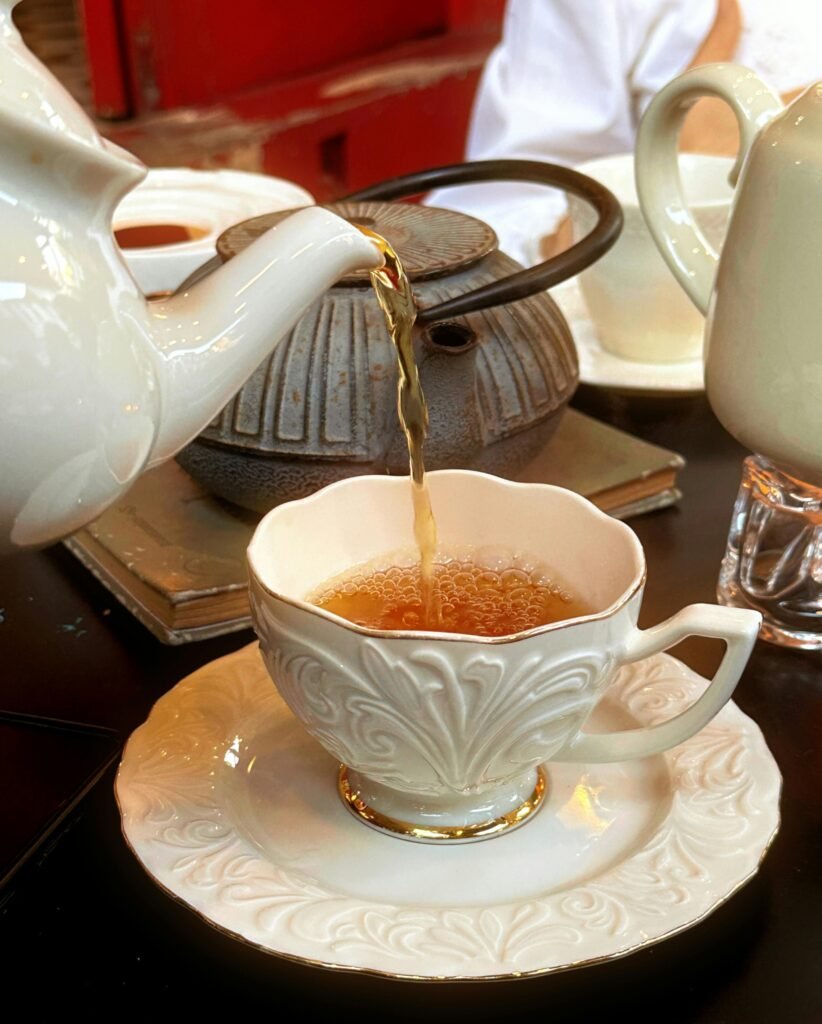
Your tea equipment works hand-in-hand with water quality to create perfect brews. Water makes up most of your cup, so its mineral content matters greatly. Different black teas respond uniquely to water types – Ceylon teas shine with soft water, while Assam varieties need more minerals to bring out their malty notes.
For optimal flavor, aim for water with a neutral pH between 6-7. Too many minerals will make your black tea taste bitter and dark, while too few can leave it flat.
You can adjust your water to match your tea type. Mineral water enhances aroma in delicate teas like first-flush Darjeeling. For robust blends like English Breakfast, filtered tap water often works best.
Some tea fans use specific filters to reduce chlorine while keeping beneficial minerals. If your water is very hard, try brewing for 30 seconds less than normal to prevent excessive tannin extraction.
This small change helps balance the stronger extraction that occurs with mineral-rich water.
Adjusting for Different Tea Types
Black teas need different brewing approaches based on their origin and processing methods. Assam teas require freshly boiled water with a steep time of 3-5 minutes to extract their full malty flavor.
Ceylon teas also need boiling water but might taste better with a shorter steep if you prefer less astringency. Each tea type responds uniquely to water temperature and steeping duration – robust CTC teas can handle longer brewing, while delicate first-flush Darjeelings might turn bitter after just 2-3 minutes.
Tea flavor profiles change dramatically with small brewing adjustments. A Keemun brewed for three minutes offers subtle cocoa notes, while four minutes brings out deeper, wine-like qualities.
The fermentation and drying methods used during processing create these distinct characteristics that respond differently to brewing parameters. Experimenting with these variables helps you discover the perfect cup for each variety.
Next, we’ll explore the rich cultural traditions that surround black tea consumption worldwide.
The Culture of Black Tea

Black tea connects people across time and borders through rituals, stories, and shared cups that build bridges between cultures. Read on to learn how tea shaped history, from British tea time to Asian tea houses, and how modern fans collect rare teas like fine wines.
Historical Significance
Black tea rose to prominence through global trade routes, becoming so valuable that tea bricks served as currency in Central Asia. This practice highlighted tea’s economic power beyond mere consumption.

British, Russian, and Indian cultures developed unique traditions around black tea, each adding their own customs to tea drinking. The East India Company played a major role in spreading tea throughout the Western world, while in East Asia, the term “hong cha” (red tea) reflects different cultural perspectives on this popular beverage.
Tea processing methods evolved distinctly across India, China, and Sri Lanka, creating the rich variety we enjoy today. Each region’s approach to growing and making tea tells a story of local innovation and adaptation.
The robust flavors of Assam differ greatly from the delicate notes of high-grown Ceylon or the smoky character of Lapsang Souchong. These differences showcase how geography, climate, and tradition shape tea production.
Health benefits recognized throughout history have further cemented black tea’s place as one of the most common and beloved drinks worldwide.
Regional Drinking Traditions

Tea customs differ dramatically across the globe, creating unique cultural identities. In China, black tea often appears in gongfu ceremonies where small clay pots steep multiple short infusions, bringing out complex flavors.
Indian chai combines strong CTC black tea with milk, cardamom, cloves, and ginger – a spicy blend that reflects the country’s bold culinary heritage. British tea traditions center around afternoon tea with Ceylon or Assam varieties served with milk, while Russians prefer their tea strong and sweet, sometimes through a sugar cube held between the teeth.
Tea drinking in Turkey features black Rize tea served in small tulip-shaped glasses, often consumed throughout the day with sugar but no milk. The Japanese, though famous for green tea, enjoy their black teas Western-style with milk and sugar.
Kenyan tea culture blends British colonial influence with local customs, resulting in milky, sweet tea prepared in distinctive ways. These regional practices show how black tea adapts to local tastes while maintaining its essential character, creating meaningful social rituals that connect people through shared cups of this popular beverage.
Modern Tea Appreciation
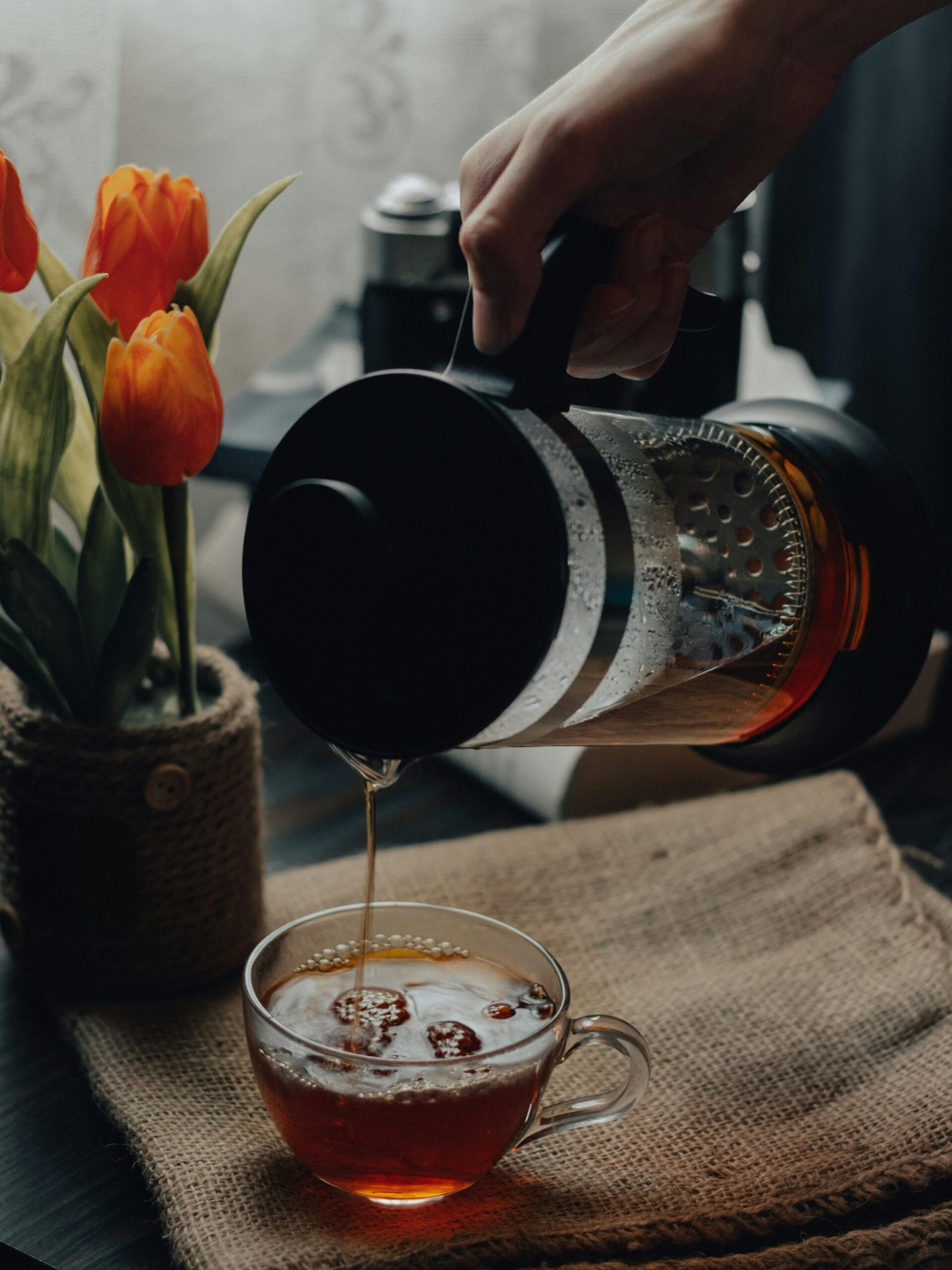
Modern tea appreciation blends tradition with new trends. Tea lovers now focus on single-origin varieties and direct trade relationships with farmers. Many enthusiasts collect rare teas and host tasting events where they compare flavor notes from different regions.
Social media has transformed how people share their tea experiences, with Instagram-worthy brewing setups gaining popularity among younger drinkers.
Tea culture has evolved beyond formal ceremonies into casual daily rituals. People invest in quality loose leaf teas rather than tea bags, seeking deeper flavors and aromas. The rise of specialty tea shops and online retailers makes premium black teas from Darjeeling, Assam, and Ceylon more accessible.
This shift toward quality-focused consumption reflects a broader interest in the cultural significance of tea and its processing methods.
Collecting and Aging

Beyond tea appreciation lies the fascinating world of collecting and aging black teas. Much like fine wines, certain black teas – especially Puerh – improve with age, developing complex flavor profiles over time.
Tea collectors seek out specific varieties known for their aging potential, storing them under proper conditions to enhance their taste characteristics. The production process of black tea creates compounds that transform during aging, often resulting in smoother, more mellow cups with unique notes not found in fresh teas.
Tea aging isn’t just about storage – it’s an art form that requires knowledge of how different black tea varieties respond to time. Chinese black teas like Dian Hong and premium Keemun often age beautifully, while some Ceylon and Assam teas can also benefit from controlled aging.
Serious collectors maintain detailed records of their tea inventory, noting purchase dates, origin details, and tasting notes that track each tea’s evolution. This practice connects modern tea enthusiasts to ancient traditions while creating personal tea libraries that showcase the remarkable transformation process of quality black leaves.
Conclusion
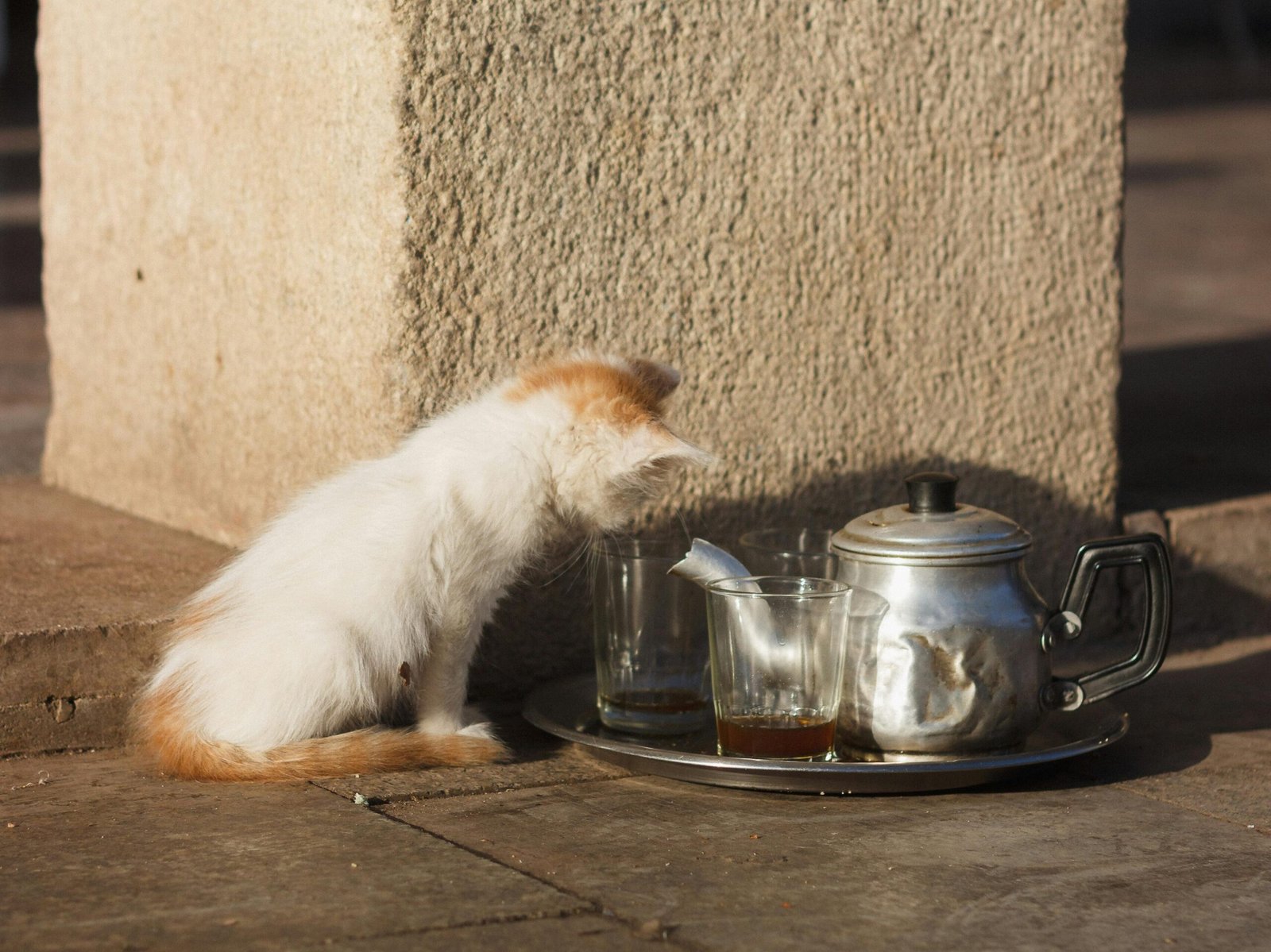
Black tea offers a vast landscape of flavors waiting for your discovery. From smoky Lapsang Souchong to malty Assam, each variety tells a unique story through its taste. Tea grades, processing methods, and growing regions all shape the final cup you enjoy.
Your tea journey might start with familiar English Breakfast blends but can expand to rare Taiwanese Ruby Black or delicate Darjeeling First Flush. Black tea rewards curious drinkers with endless nuance and character.
Try different brewing techniques and tasting approaches to fully appreciate what makes each black tea special.
FAQs
1. What are the common types of black tea?
Popular black tea varieties include English Breakfast, Earl Grey, Darjeeling, Assam, and Ceylon. These robust black teas come from China, India, and Sri Lanka. Each type offers unique flavors based on where the teas are grown.
2. How is black tea different from green and white tea?
Black tea undergoes full oxidation (redox), while green and white teas don’t. This process makes the tea darker with stronger flavors and higher caffeine content. The oxidation creates the rich, bold taste that many tea lovers enjoy.
3. What is Earl Grey tea?
Earl Grey is a flavored black tea made with bergamot orange peel. It has a distinct citrus aroma that sets it apart from other black teas. This popular blend originated in England but is now enjoyed worldwide.
4. Are there any health benefits to drinking black tea?
Black tea contains antioxidants that may support heart health. It provides a moderate caffeine boost without the jitters coffee can cause. Many black teas also offer digestive benefits when consumed regularly.
5. What is chai tea?
Chai tea consists of black tea mixed with warming spices like ginger, cardamom, and cinnamon. This Indian black tea creates a spicy, sweet profile that’s become popular worldwide. It’s traditionally prepared with milk and sugar for a creamy, comforting beverage.
6. Can I find decaffeinated black teas?
Yes, decaf black teas are widely available. The decaffeination process removes most caffeine while keeping the tea’s flavor. These options work well for evening drinking or for those sensitive to stimulants.
References
- https://artfultea.com/blogs/101/types-of-tea-a-comprehensive-guide?srsltid=AfmBOooEi8PNbQQ1s9o0TtsDGoEoLwlDoJHGqdpDOJRNjPBG-dLsttib
- https://www.teasource.com/pages/types-of-tea?srsltid=AfmBOoq25tmAQMJZ_IpW1nyi2jWMCwI7l6daXwZhOCpFiOWpcrY2Ki88
- https://www.revolutiontea.com/blogs/news/the-passionate-tea-drinkers-guide-to-black-tea?srsltid=AfmBOooXYywDoBdLcXFlijfKwzsZEtvP-P18JLv62a-pE30EI7Xj_OoF
- https://www.revolutiontea.com/blogs/news/the-passionate-tea-drinkers-guide-to-black-tea?srsltid=AfmBOoohHBf6eMk4Msa0PCUIyyv5Ko4bqR48QpEix56rewD_Ib5j-jTe
- https://www.lochantea.com/index.php?route=pavblog/blog&id=19
- https://www.teadog.com/blogs/news/difference-between-english-scottish-irish-breakfast-teas-explained?srsltid=AfmBOorN6OyDWRMTCYtbmmG0ksphyfVcUwjxGyIXtSoObmuY2Lfj8UTt
- https://www.thekitchn.com/whats-the-difference-between-english-irish-and-scottish-breakfast-teas-202067
- https://teawithgary.com/2024/03/14/earl-grey-vs-black-tea/ (2024-03-14)
- https://simplelooseleaf.com/blogs/news/black-tea-types
- https://www.teaforum.org/viewtopic.php?t=1931 (2021-02-28)
- https://www.revolutiontea.com/blogs/news/the-passionate-tea-drinkers-guide-to-black-tea?srsltid=AfmBOoqSIcJMmuXWPpCINfENFerSQ5-zCf5yfVX8mHS5x6MoLFecgOqS
- https://www.paperandtea.com/blogs/journal/secrets-of-tea-blending
- https://senchateabar.com/blogs/blog/darjeeling-tea?srsltid=AfmBOormYtHBlJBfnM6IThlfz25XgHjErWeAZ75z-iOyM8DStHd9gS9-
- https://artfultea.com/blogs/tea-wisdom/indian-black-tea-origins-and-types?srsltid=AfmBOorE-bCMPLZH09q6s5YUIHwX4D0P9pJ9F-kIRUaX1XfTQkp9AiUK
- https://teapigs.com.au/blogs/blog/types-of-black-tea?srsltid=AfmBOoqbQAl3nht9NNcrTL_eQMKwjfUGNi211yHSBpcoxEvhEIi2lZyf (2024-06-24)
- https://artfultea.com/blogs/tea-wisdom/indian-black-tea-origins-and-types?srsltid=AfmBOoornDLqyKP3DFX6Mf845G–nrN_WVQs1x0Eu06ACpNNn8KxAZJO
- https://artfultea.com/blogs/tea-wisdom/indian-black-tea-origins-and-types?srsltid=AfmBOorJBMn4SxmiLFr2lwjFP2a9xJHKUyx-ommVB2n8A2nc1yw7_VKq
- https://artfultea.com/blogs/tea-wisdom/indian-black-tea-origins-and-types?srsltid=AfmBOoqZnwVfXoEaSljaRuTWGXWHUYol70Evni88gXnbeI6sviOIVfH6
- https://artfultea.com/blogs/tea-wisdom/what-is-keemun-black-tea?srsltid=AfmBOoquQfWOyeWJlAjvacqsbmlZPT1aa5NzAFm_P1sucVNjgJaWsyFy
- https://www.borntea.com/blogs/tea/complete-guide-to-black-tea?srsltid=AfmBOoqeJjZnP26b7yip7JKlh3yldt5mRhBUCkDT5MVWFqQspSwVfI_r
- https://artfultea.com/blogs/tea-wisdom/what-is-lapsang-souchong-all-about-this-smoky-black-tea?srsltid=AfmBOopsavey8g-w6HHFKwxroLaFU1L1VnzNsNymXsWL5ch6vsm3blwE
- https://itsmorethantea.wordpress.com/2021/04/15/jin-jun-mei-a-gentle-black-tea/ (2021-04-15)
- https://redrockteahouse.com/blogs/articles/ultimate-guide-to-black-tea?srsltid=AfmBOopBj-v8E7oI0TDhy62vq1YDk2dTmJEe50EWxepym9pvTN-f_qT2
- https://pressbooks.cuny.edu/chinesefarmerteas/chapter/types-of-chinese-tea-a-comprehensive-guide-to-the-categories-and-benefits/
- https://teakruthi.com/blogs/tea-break/what-is-so-special-about-sri-lankan-tea-or-ceylon-tea?srsltid=AfmBOorWYjSzUvltvq2pMtqkKBbNZQRE2pxTYhnOpvoDeI6HSlFsHsEj
- https://senchateabar.com/blogs/blog/ceylon-tea?srsltid=AfmBOopYmS3zrKnrP_XHjh-eYh26WYpy1pxmP_KD9f9Pvs7VE55B3HTy
- https://teakruthi.com/blogs/tea-break/what-is-so-special-about-sri-lankan-tea-or-ceylon-tea?srsltid=AfmBOopZbvOrFvoPcjksAIGgdNsf_CZKkTNKXwxozw8tFyvpCR6ORDYA
- https://senchateabar.com/blogs/blog/ceylon-tea?srsltid=AfmBOoo52CFRn18jdeGyZoBcwVT3d2o8wU3i79WmtTiu1FW9CCqQvMds
- https://senchateabar.com/blogs/blog/ceylon-tea?srsltid=AfmBOopSBjr7XX_3E-TsS6jNcOX65ulETNKiPuc8LtqEBoqraPQKb12X
- https://www.theteahouseltd.com/blog/2016/05/19/our-guide-to-black-tea/ (2016-05-19)
- https://pathofcha.com/blogs/all-about-tea/a-guide-to-taiwanese-tea?srsltid=AfmBOoqCqPZd7Ot1DRD0Nl9NROAX9OD4f4R0KB0he_v_nZL5aMd7RA5C
- https://pressbooks.cuny.edu/chinesefarmerteas/chapter/black-tea-in-thailand-and-chinese-black-tea-a-comparative-guide/
- https://www.teaforum.org/viewtopic.php?t=2125
- https://www.revolutiontea.com/blogs/news/the-passionate-tea-drinkers-guide-to-black-tea?srsltid=AfmBOopoBkq66SP3xuUIdWx7RBCMqPXU_kGqm994geu47EndpM9iTD4i
- https://pmc.ncbi.nlm.nih.gov/articles/PMC11593154/
- https://teapigs.com.au/blogs/blog/types-of-black-tea?srsltid=AfmBOor_ki49AnQwXfh5AkCsResOPdaOrkrbmErJAZU6pATQfbHZg9Sv
- https://artfultea.com/blogs/101/types-of-tea-a-comprehensive-guide?srsltid=AfmBOorlM72ep1JdRpzwLT4KLa8_-XQTvJlTOXJGWqdTjOWTenD1k_GA
- https://redrockteahouse.com/blogs/articles/ultimate-guide-to-black-tea?srsltid=AfmBOoo_JCbXty2sdFktRl6QPHt-Au7nHk_hnkDK3eES2dPwjeqQ5cIr
- https://jyyna.co.uk/tea-leaf-grading/
- https://artfultea.com/blogs/101/types-of-tea-a-comprehensive-guide?srsltid=AfmBOopvbAR_diC81rpmpU42LT9_BHd-B-NaJ0PuepYJLKerPw1Kjw17
- https://blog.mountainroseherbs.com/guide-to-black-tea-how-to-choose-the-quality-and-flavor-you-love-best (2023-05-19)
- https://artfultea.com/blogs/101/tea-brewing-temperature-guide?srsltid=AfmBOopIVQQXPKOH-50CajnKW39KVVffO0VeE1SkEWM2ILHIvTk5zuyv
- https://www.hackberrytea.com/blogs/tea-education/tea-brewing-101-black-tea?srsltid=AfmBOorKhV01EhO6xwUS8ppca_cJvsDhG-yoklvXMYO3eBEmWK9-ueXt
- https://www.science.gov/topicpages/b/black+tea+brew
- https://pmc.ncbi.nlm.nih.gov/articles/PMC8857412/
- https://pmc.ncbi.nlm.nih.gov/articles/PMC10192933/
- https://brewbuch.com/types-of-black-tea/
- https://pmc.ncbi.nlm.nih.gov/articles/PMC10743253/
- https://artfultea.com/blogs/101/types-of-tea-a-comprehensive-guide?srsltid=AfmBOopJB4cuPsk1uW_O9t2KGyjjBCjL8o7GT5LMjpaOvVQPxz973dGp
- https://jyyna.co.uk/types-of-black-tea/
- https://www.revolutiontea.com/blogs/news/the-passionate-tea-drinkers-guide-to-black-tea?srsltid=AfmBOoq6eR16cRfDsX-_n28JePcGlbgCHbJSBDjJ5qeVEb89i76FfMDb
- https://artfultea.com/blogs/101/types-of-tea-a-comprehensive-guide?srsltid=AfmBOop6x4u5iNkBKK-M-9LJjs0VG8lgRSCUH_E2SMkjqymNb_0FIjzU

